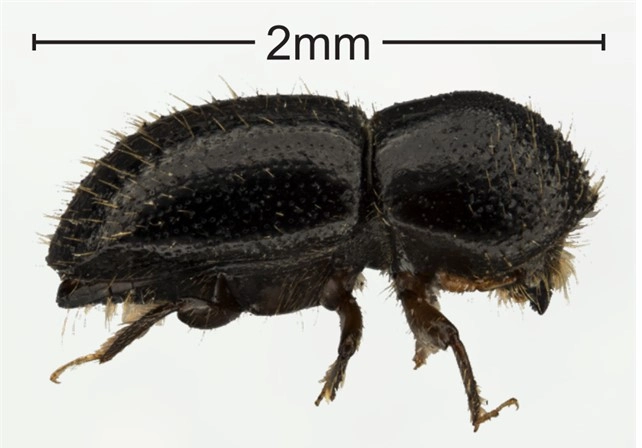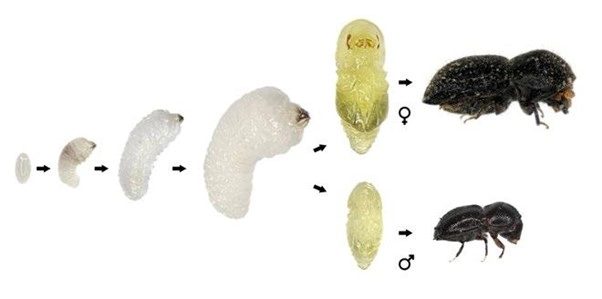Polyphagous shot-hole borer
Polyphagous shot-hole borer (PSHB) is a small exotic beetle that bores into tree trunks, stems and branches, and can lead to tree death.
It was detected in East Fremantle, Western Australia in August 2021.
The beetle is is a high-risk invasive species and an agricultural and environmental pest. It lives in host trees and can be found in over 400 species across amenity, native and horticultural production trees.
To effectively prevent the spread of the beetle, you must follow the import conditions PDF (563.1 KB).
Immediately report suspected infestations and watch out for potential threats.
Image: An adult PSHB beetle.
Where it is found
Originally thought to be native to Asia, it has been found in many regions, including:
- Africa
- South Africa
- Asia
- China
- India (Uttar Pradesh)
- Israel
- Japan
- Malaysia
- Sri Lanka
- Taiwan
- Thailand
- Vietnam
- Italy
- United States (Florida and California)
- Australia (Western Australia)
- Samoa
- Argentina.
As the beetle infestation spreads, it is likely to be found outside of these areas.
Appearance
Eggs
Eggs are 0.3mm long. They are laid individually or in clusters and hatch in 4 to 6 days.
Larvae
Larvae have a white, c-shaped, legless body with a dark head. They grow to around 3.5mm long and 1.1mm wide.
After 16 to 18 days, they will pass through 3 developmental phases called instars, then pupate.
Pupae
Pupae are white and around 1.5 to 2.5mm long. They will stay in this stage for 7 to 9 days while their bodies mature.
Adults
Adults are dark brown and around 1.5 to 2.5mm long. Females are larger than males.
Life cycle
The beetle’s life cycle from egg to adult takes around a month, but this can be affected by the host tree and temperature.
The larvae, pupae and male adult stages all happen inside the same tree.
Only female adult beetles leave to find a new host tree. When she finds a suitable tree, she bores a tunnel into it and lays eggs.
Damage
PSHB carries the fungal disease Fusarium euwallaceae. This disrupts the tree's vascular system.
Infestation of this fungus can lead to:
- wilting
- dieback
- tree death.
For more information about host tree species, read the global host list PDF (649.4 KB).
Signs of PSHB infestation in trees
Tree monitoring is crucial for early detection and vital to eradicating the beetle.
Below are some signs of a PSHB infestation in trees.
Branch dieback
In susceptible trees, the fungus kills tree tissue causing branch dieback and tree death.
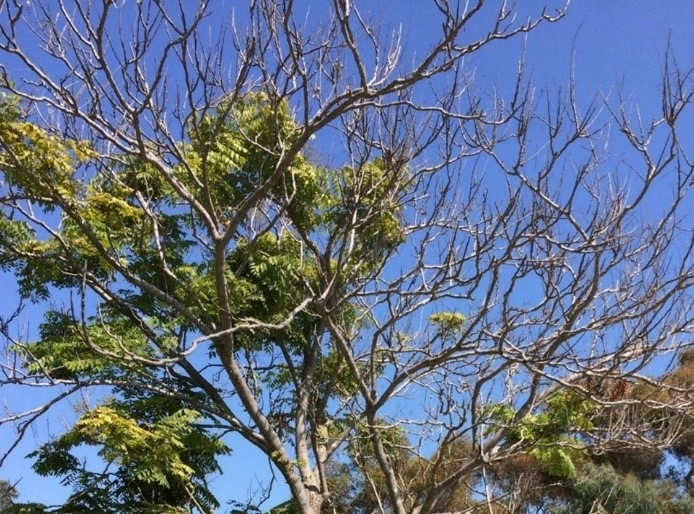
Image: Tree dieback ©Western Australian Government
Multiple entrance holes
The beetle will create holes 0.85 mm in diameter, the size of a ballpoint pen tip.
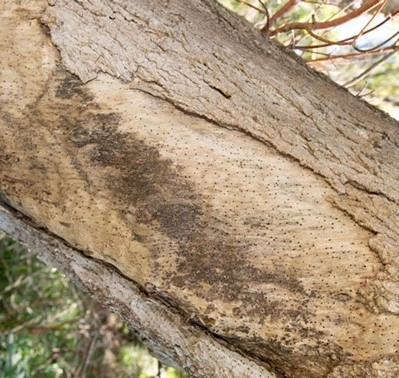
Image: Multiple entrance holes ©Western Australian Government
Excessive frass
Frass is small bits of wood and insect waste produced by the beetle's tunnelling. Frass can look like sawdust or noodles.
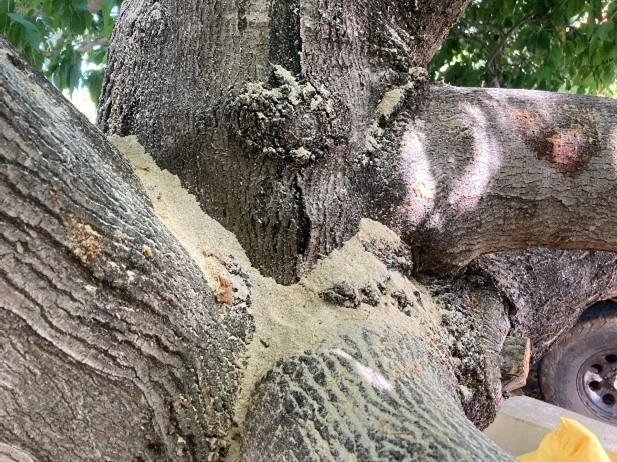
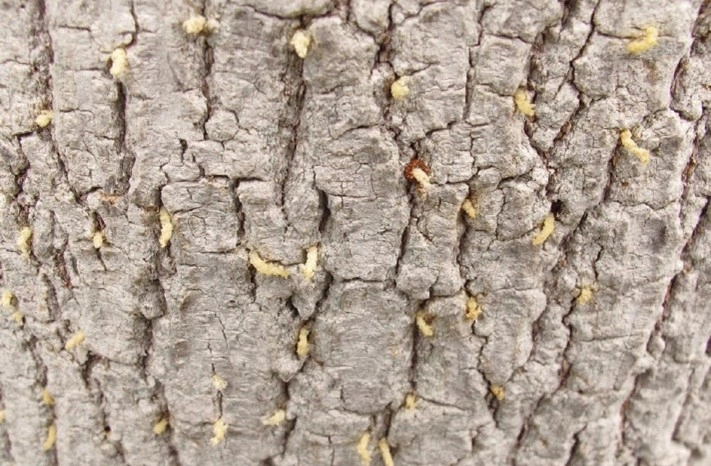
Images: Excessive frass ©Western Australian Government
Thick resin or sap
Thick resin or sap may come out from entrance holes.
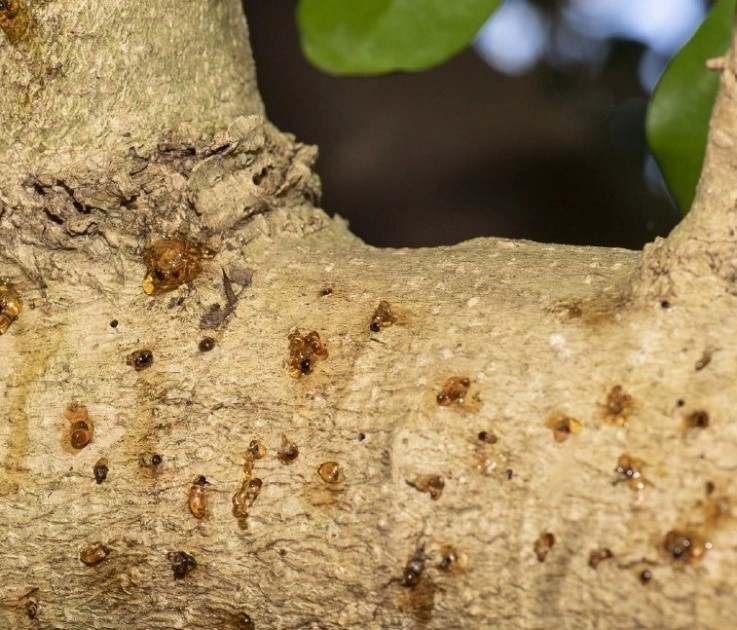
Image: Resin or sap ©Western Australian Government
Sugar volcano
Crystal-like foam may spill out from entrance holes.
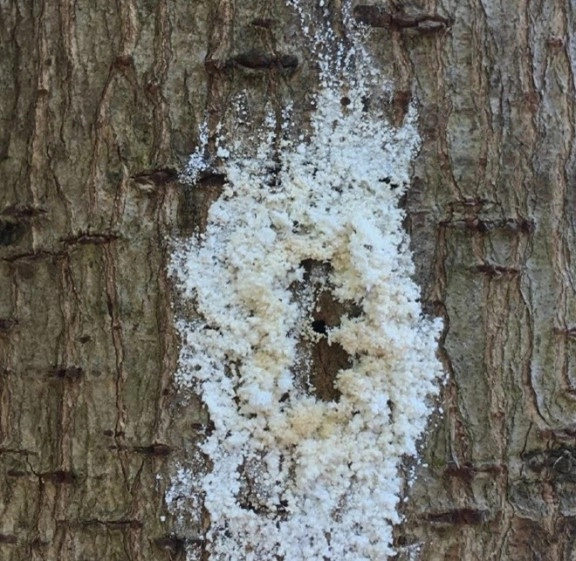
Image: Sugar volcano ©Western Australian Government
Spread
The beetle spreads through human activity and natural ways of spreading.
To search for a new host tree, female adults can fly up to 40 m and be carried up to 400 m by wind.
People can inadvertently spread the beetle by moving infested:
- living plant material
- firewood
- green waste
- woodchips
- timber packaging
- furniture.
PSHB can survive for months in cut wood, also known as felled wood. This is a major way infestations spread over large distances.
Report PSHB
If you think you have seen polyphagous shot-hole borer in the NT, contact either:
- Northern Territory Plant Biosecurity:
- call 08 8999 2118
- email plantbiosecurity@nt.gov.au
- Exotic Plant Pest Hotline:
- call 1800 084 881 (nationwide service).
Submit a sample
You can submit a specimen for identification to Department of Agriculture and Fisheries Entomology at Berrimah Farm, either by mail or in person.
To prepare your sample:
- place the specimen in a plastic bag and seal it properly, and
- print and fill in the entomology sample submission form PDF (419.5 KB).
Read more about pest sample submissions.
Send by mail
Entomology Section
Department of Agriculture and Fisheries
GPO Box 3000
Darwin NT 0801
Deliver in person
Combined Science Services Building, Berrimah Farm
29 Makagon Road
Berrimah NT 0828
Contact
For more information, contact Department of Agriculture and Fisheries Entomology:
- call 08 8999 2258
- email insectinfo@nt.gov.au
Give feedback about this page.
Share this page:
URL copied!
